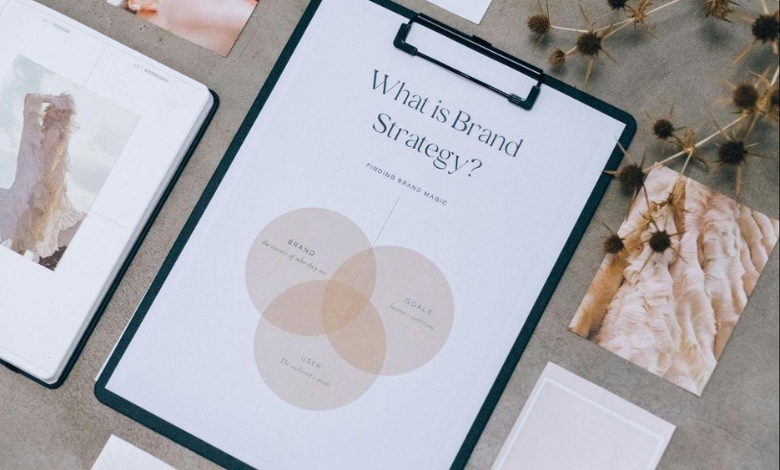Learn how brand guidelines ensure consistent logo usage, typography, color palettes, and tone of voice for better brand recognition and growth.
Want to keep your brand sharp and consistent across every platform? Brand guideline templates are the secret to building a cohesive, recognizable identity that truly resonates with your audience.
Think of it like organizing your living space. If you want it to look tidy and inviting, you set up a system: decide where things go, establish a few ground rules, and stick to them. Follow those rules, and your space stays clean and functional, with no frantic cleanup required when guests drop by.
The same principle applies to managing your brand assets. Whether you’re running different types of business models or a single venture, without rules or structure, things will look messy and chaotic. But when you take your time to set up clear guidelines – like how to use your logo or where to store important files – everything falls into place. Your team can find what they need in seconds instead of wasting hours sifting through a mess of folders.
In this post, we’ll understand how brand guideline templates can transform your brand into something polished, seamless, and cohesive. So, let’s get started!
Article Breakdown
Quick Recap: Branding Assets
If you’re here, you probably already know what branding assets are. But just in case that slipped your mind, let’s do a quick recap.
Branding assets are all the elements you use to visually and verbally represent your brand. These include things like your company logo, color palette, iconography, fonts, or even the custom voiceover style you use in videos. If you use these assets repeatedly, people will start to recognize your business with these assets.
This recognition builds trust and loyalty among consumers – both of which are paramount for driving sales in 2025. After all, without trust, it’s hard to turn curious visitors into loyal customers.
But What are Branding Guidelines?
As the name suggests, branding guidelines are a set of rules you establish to ensure your branding assets are used precisely as intended across all platforms.
At first, these guidelines might not seem necessary – especially if your business is small and you’re managing everything yourself, like social media and content creation. In this stage, branding feels instinctive. Even if your assets are scattered across random folders, you know exactly where to find them. Your brand voice comes directly from your mind, and your brand personality is a replica of your vision.
But as your business grows, things change. You start outsourcing tasks like content creation to other professionals. These individuals aren’t telepathically connected to you – they won’t instinctively know how you want your branding assets used unless you provide clear instructions. And trying to guide every single team member individually is not only inefficient but also next to impossible.
So, instead of relying on ad hoc methods, we compile branding guidelines. You share these guidelines with your team, and now everyone understands precisely how to use your branding assets. They align with your vision, and just like that, branding becomes fun and efficient!
What to Include in Your Brand Guidelines for Success
Now, let’s see what a comprehensive brand kit looks like. Here’s what your brand guidelines should include:
Logo Usage:
Your logo is the face of your brand. It’s the most important visual element and most likely the first impression that hooks your audience into potential consumers. You wouldn’t want to mess up your “face,” right?
Rules for Placement and Sizing:
Clearly define where your logo should appear on various materials, whether it’s centered, aligned to the left, or at the bottom corner. Specify the amount of space required around your logo to keep it uncluttered and visually prominent. Moreover, set minimum and maximum logo sizes.
Logo Variations:
Include visual examples of full-color, monochrome, and grayscale versions of your logo for different use cases.
Dos and Don’ts:
Dos:
● Use the logo precisely as outlined in your guidelines
Don’ts:
- Don’t stretch or distort the logo’s proportions.
- Don’t alter the colors or add unapproved effects.
- Don’t place the logo on busy backgrounds that compromise its visibility.
Typography:
Even if you’re reading the same word, the vibe changes drastically depending on the font. “Professional” in Times New Roman feels formal and serious, while “Professional” in Dancing Script will feel a bit playful and elegant.
Primary Fonts:
Specify the main typefaces you want to use:
● Headings: Bold and impactful fonts to grab attention.
● Subheadings: Clean and complementary fonts to maintain hierarchy.
● Body Text: Easy-to-read fonts like Arial.
Secondary Fonts:
Include fallback fonts for situations where the primary fonts are unavailable.
Usage Guidelines:
Define specific sizes for headings, subheadings, and body text. Set rules for line height and specify alignment preferences, such as left-aligned, centered, or justified text, depending on the context.
Do’s and Don’ts:
Do’s:
● Use only the approved font styles (e.g., bold or italic) as mentioned in the guidelines.
Don’ts:
● Avoid adding unapproved customizations like outlines, shadows, or gradients.
● Do not mix fonts that aren’t part of the approved brand palette.
Color Palette:
Why does the bride always walk down the aisle in white? And why do people at weddings wear formal colors like navy, steel, or charcoal? It’s because colors evoke emotions. Just like a wedding’s color scheme sets the tone for celebration, your brand’s color palette should reflect the feelings you want to convey.
Primary Colors:
Choose a list of primary colors you’d like to use for your content. Moreover, specify HEX, RGB, and CMYK codes for different scenarios.
Secondary Colors:
Add secondary or complementary colors that you’d like to use in your content. These colors will add variety without straying from your brand’s identity. You can also specify which secondary color should be used for specific design elements, such as buttons, call-to-action highlights, or secondary text.
Usage Guidelines:
Define which colors are suitable for specific backgrounds. Outline text color recommendations and specify where accent colors should be used for emphasis. The end goal here is to look legible in all cases.
The Tone of Voice and Messaging:
Your brand messaging and tone of voice are a direct reflection of your brand’s personality. It’s how you want to communicate with your audience – whether professional, casual, or witty.
Core Personality:
Define your brand’s core traits such as professional, friendly, innovative, or authoritative.
Writing Style:
Specify where the tone should be formal or conversational. Make sure to include examples in your guidelines.
Application Across Platforms:
Provide examples of how the tone should adapt for social media, emails, advertisements, and website content.
Dos and Don’ts:
Do’s:
- Use words that reflect your brand’s personality (e.g., clear, approachable).
- Adapt the tone to match the context of the message and platform.
Don’ts:
- Avoid jargon or overly complex language.
- Don’t use slang or casual phrases if your brand falls towards the formal side.
- Avoid hostile or antagonistic language that could drive away potential customers.
Imagery and Iconography:
You can use the most flowery phrases in your marketing. Still, sadly, nobody would like to read that chunk of content if it isn’t complemented with compelling imagery and iconography as well.
Photography Style:
Define the type of images that best reflect your brand’s personality. Whether it’s lifestyle, minimalistic, or bold imagery, provide examples for reference.
Illustration Guidelines:
If you want to include illustrations in your content, specify the style, color scheme, and themes to be used.
Icons and Graphics:
Include a library of approved icons in your BAM platform and clarify how they should be used.
Key Takings:
- In a nutshell, your branding guidelines are the blueprint for building a strong and reputable brand voice.
- They make sure that your assets are used by your team exactly as you intend.
- These guidelines will allow your brand to communicate clearly and cohesively across all platforms.



